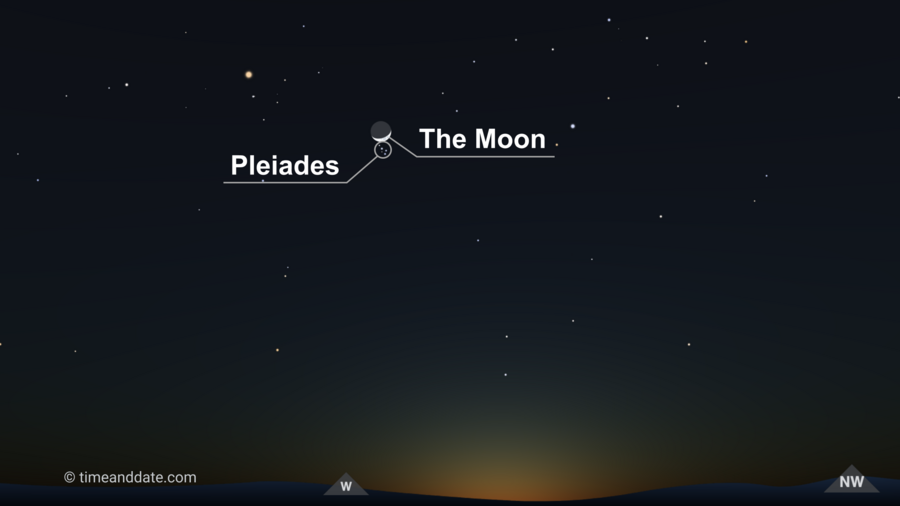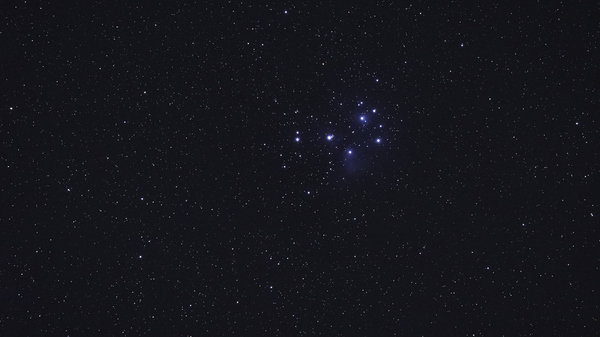
What Are the Pleiades?
The Pleiades, also known as the Seven Sisters, are one of the most recognizable star clusters in the night sky.
Visible from around October to April, they are easily seen with the naked eye and have been observed by civilizations for thousands of years.
Astronomically, the Pleiades are classified as an open star cluster; their official name is Messier 45 (M45). They lie approximately 440 light years from Earth.
The Pleiades are part of the constellation Taurus. With an apparent magnitude of 1.6, they are among the brightest star clusters in the sky. The cluster contains over 1000 stars, though only a handful are visible without a telescope.
The stars of the Pleiades most easily visible to the naked eye are Alcyone, Atlas, Electra, Maia, and Merope—with Alcyone shining the brightest among them.
Find the Pleiades on our Night Sky Map
How to See the Pleiades on April 1
At the moment, the Moon passes close to the Pleiades in the sky every month, creating a beautiful conjunction. The next time this happens is on April 1.
To get the best views of the Pleiades and the Crescent Moon on April 1, look westward just after sunset. The Pleiades will be positioned near the Waxing Crescent Moon, making them easy to spot in the evening sky.
No special equipment is needed to view this event, as the Pleiades are one of the most visible star clusters in the night sky.
However, for some locations in southern Australia and New Zealand, the Pleiades will set before they become fully visible, and the sky may still be too bright during twilight for the fainter stars to appear.
The Moon Occults the Pleiades in Europe
In some parts of Europe, the Moon will occult the Pleiades, making them invisible.
In fact, in some European countries, you may be lucky enough to get the chance to witness the Pleiades disappear behind the Moon shortly after they appear in the night sky.
Check our Night Sky Map to see if the occultation is visible from your location.
